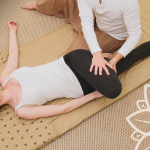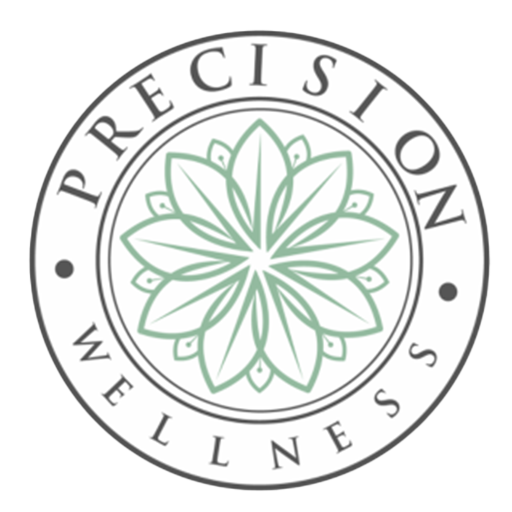Weight Loss and Bodywork | Helping You Meet Your Goals
By Genevieve P. Charet
Originally published in Body Sense magazine, Spring/Summer 2010. Copyright 2010. Associated Bodywork and Massage Professionals. All rights reserved.
Massage–anything this good must be fattening, right? Wrong! Scientists now confirm what massage therapists have always known: massage can be a powerful and effective weight-loss tool. By improving your body’s resilience, aiding muscle nutrition and flexibility, and supporting your mental and emotional well-being, massage can take your weight-loss plan to a whole new level.
The relationship between massage and weight loss is the result of many subtle improvements working together, including better injury prevention and healing.
Jeff Wooten, founder of YourBodyMechanic.com, explains: “Massage helps to heal existing injuries by breaking down scar tissue and other adhesions. This creates a more functional muscle and improves joint integrity.” Massage therapists also work to improve your flexibility and range of motion. This makes you less likely to hurt yourself, meaning more productive and pain-free hours in the gym. But the benefits don’t end there.
When you receive a massage, you’re directly impacting the circulatory system. By constantly moving blood to body tissues, your massage therapist increases the amount of oxygen and nutrients your muscles receive. This soothing cycle eases you into much-needed rest and relaxation time.
Deneen Rhode, a massage therapy instructor who teaches fitness classes, says, “The qualitative style of Swedish massage relaxes the nervous system and takes the body into what is known as the parasympathetic nervous system. The parasympathetic state is very restorative to the body–it is where the body needs to go to heal itself.” When you accomplish this through massage, it means you’ll need less recovery time between workouts and that you can move your fitness routine full speed ahead.
Jeff Mann, the regional manager for Cortiva Institute Schools of Massage Therapy, knows this firsthand. With experience as both a massage therapist and personal trainer, he has seen the way massage can help clients drop pounds and keep them off. “Massage to weight loss is like the padding on a steering wheel–you can do without it, but it makes it a lot easier and more comfortable to hang on to.”
Make It Work For You
Losing weight isn’t easy. Thankfully, it’s simple to incorporate massage into the healthy lifestyle you’re building. It’s a good idea to have a special consultation with your massage therapist about your new goals and fitness plan so that treatments can be customized to your body’s specific needs.
Meredith Nathan, director of massage at Pulling Down the Moon in Chicago, says there are some specific questions you should be prepared to answer. For example, “If you’re following an exercise routine, how has it affected your body? Are there any particular areas of tension or discomfort? Where do you tend to gain weight first? How is your digestive health? Is your lifestyle relaxed or stressful?” The more information you can provide your therapist, the better your results will be–and this extends to your medical history. During your intake process, inform your massage therapist about any health problems, surgeries, medications, and even recent minor illnesses you’ve had. Anything your doctor needs to know, your massage therapist needs to know as well.
”Generally, massage on a healthy [client] should be no more that 90 minutes; 60 minutes is the most common,” Rhode says. Weekly massages are ideal, but you can reap plenty of benefits from monthly visits, too. Your massage therapist will work with you to set a specific schedule of appointments that fits with your workout routine, as well as your finances. Don’t be concerned if your MT wants to see you more often at the beginning of your plan–this is normal, and helps him or her to get to know your body’s way of handling stress and exertion.
Don’t Be Shy
While it’s natural for anyone to feel a little self-conscious at first about undressing for a massage, overweight clients often have major anxieties about disrobing. If you’ve put off massage therapy because you’re embarrassed about your body shape, take heart: massage therapists are sensitive to your concerns and don’t want you to feel ashamed. Thom Lobe, MD, founder and director of Beneveda Medical Group in Beverly Hills, says, “Massage therapists are just that–therapists. They are used to seeing all shapes, sizes, and conditions of the body. A well-trained massage therapist has an entirely clinical perspective, no different than any other health-care worker. The fact is, when I give a massage…what the body looks like isn’t even in my conscious thoughts.”
Throughout the course of a massage, clients are discretely draped under a sheet, with the therapist only uncovering the body part being worked on. Of course, you can always wear swim attire or undergarments during your massage, although they can hamper the full therapeutic effects your therapist offers. Remember, rest easy in the knowledge that your massage therapist has been trained to nurture and help you without passing judgment. Nathan adds that massage therapists “do not expect to work on bodies that are already in perfect health; rather, we get excited about supporting our client’s journey toward better health.”
The Power of Touch
While it’s easy to overlook your emotional health when planning a new diet and exercise regimen, it’s the primary factor determining your weight-loss success. Along the path to fitness, the role of massage in supporting your mental and emotional health may be a critical component. Massage is a calorie-free reward; a way to treat yourself without guilt. Your massage therapist also acts as a cheerleader who celebrates your victories with you and helps keep you positive and committed.
“The more professionals you have on the team, the better,” Wooten says. “The worst thing to do, in most cases, is attempt to get into shape on your own.” Adding a massage therapist to your weight-loss plan is a great way to tell yourself just how serious you are about taking this step.
Massage is a powerful way to love, respect, and nurture yourself. When you love yourself, you won’t engage in unhealthy lifestyle choices. Rhode calls this “the power of touch”–the unique ability that touch has to make us feel safe, comfortable, and at peace. “Very often, those who are obese or overweight become less social and isolate themselves. They become disconnected from others. They may experience less touch in their lives in general,” Rhode says. This disconnect continues a downward spiral of low self-worth and unhealthy living. Massage is a great way to fill in that gap and rebuild a healthy life from the ground up. “I’ve learned that there are no perfect bodies,” Nathan says. “All bodies are unique and have unique needs. All bodies deserve to be nurtured.”
Regular massage is all about reconnecting with your body and getting back into yourself. As you continue to take time out to relax and care for your body through regular appointments, you’ll naturally become more aware of your body’s needs and more motivated to meet them. It’s all part of a greater picture of health and fitness, one that Wooten says, “is a journey, and not a destination.”
Your massage therapist wants to help you build a bridge between mind and body that will last a lifetime. So update your massage from guilty pleasure status to indispensable health habit, and reap the benefits in the form of a fitter, happier you. You’ve earned it.
Genevieve P. Charet is a Chicago-based freelance writer, copy consultant, and food blogger. To read more about her, visit www.genevievecharet.com.




